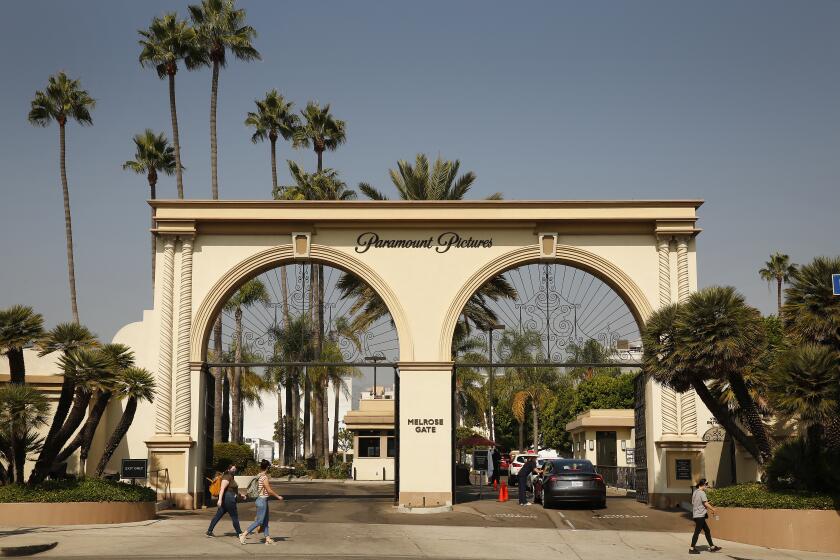U.S. Incomes, Spending Show Meager Gains : Economy: But the recovery’s halting nature was offset by a positive quarterly trade report and a fourth consecutive manufacturing gain.
- Share via
WASHINGTON — The government Monday reported puny gains in Americans’ income and spending in April and a decline in construction activity, illustrating the halting nature of the economic recovery.
But the bad news was somewhat counterbalanced by a positive trade report for the first quarter and a private index showing a fourth consecutive manufacturing gain in May.
The manufacturing index’s surprisingly strong gain helped sparked a rally on Wall Street, pushing the Dow Jones industrial average up more than 16 points to its first close over 3,400.
The index, drawn from a survey by the National Assn. of Purchasing Management, showed gains in production, new orders and exports in May. The portion of the index measuring employment conditions hit a three-year high.
“The rise is a good sign that . . . we’ll see stronger employment gains . . . as we move forward,” said economist Paul Lally of R. H. Wrightson & Associates in New York.
However, economist Sung Won Sohn of Norwest Corp. in Minneapolis said, “There’s a possibility that manufacturers are getting overly ebullient especially since consumers seem to be stepping back a little bit.”
The Commerce Department said incomes edged 0.1% higher in April to a seasonally adjusted annual rate of $4.99 trillion, after a 0.4% rise in March.
April marked the third consecutive month of income growth. But economist Sandra Shaber of the Futures Group, a Washington consulting firm, noted that much of the strength has come from government payments to farmers plus welfare and unemployment benefits and temporary measures such as reduced income tax withholding.
“This was in no way a reflection of economic strength,” she said.
Consumer spending, which accounts for roughly two-thirds of all economic activity, rose 0.3% to a seasonally adjusted annual rate of $4.04 trillion after no change the month before.
It was the sixth month without a decline in overall spending. But it was the second straight drop in an important component--spending on big ticket durable goods such as automobiles and furniture. Durable goods spending fell 0.8% after a 2% drop in March.
“All the evidence seems to point out that the budding expansion is going to be relatively slow by historic standards,” Lally said.
In another report, the Commerce Department said the merchandise trade deficit narrowed by 5.8% to $17.5 billion in the first three months of the year, the second-best showing in nine years. It reflected a big drop in America’s foreign oil bill.
Trade was one of the few bright spots during the recession, but now analysts are worried that slowdowns in Japan and Europe will put a lid on U.S. export growth.
In a speech to international bankers in Toronto, Treasury Secretary Nicholas F. Brady praised Japan for stimulating its economy with lower interest rates and said he hoped to see further action by the Japanese government to increase domestic demand.
Meanwhile, construction spending in April fell 0.3% after three straight months of increases, the Commerce Department said. Declines in both commercial and government construction more than offset an increase in housing.
In April, the key component of incomes--wages and salaries--was unchanged, although manufacturing wages were up. Also, personal interest income fell. Increases were reported for farm subsidy payments, welfare payments and business owners’ income.
Disposable income--or income after taxes--was unchanged in April following strong 1% gains in both March and February. The fact that spending grew and disposable income did not reduced the savings rate from 5.6% of income in March to 5.3% in April.
Disposable income adjusted for inflation shrank 0.2% in April after rises of 0.6% in March and February.
Purchasing Manager’s Index The purchasing manager’s index tracks overall business activity at 300 industrial companies. May, 1991: 45.0% May, 1992: 56.3% Source: National Assn. of Purchasing Management
Construction Spending Billions of dollars, seasonally adjusted April, ‘92: 418.8 May, ‘92: 399.0 April, ‘91: 407.1 Source: Commerce Department
More to Read
Inside the business of entertainment
The Wide Shot brings you news, analysis and insights on everything from streaming wars to production — and what it all means for the future.
You may occasionally receive promotional content from the Los Angeles Times.










